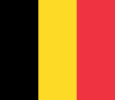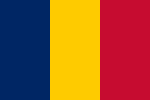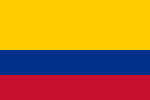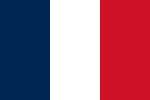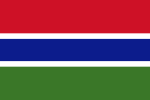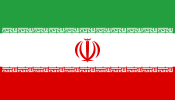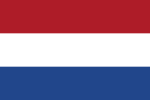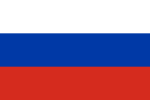User:Oddrobb/Sandbox
Work in progress
[edit]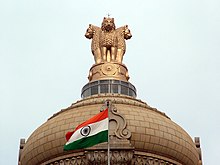
A bicolour or bicolor (three colours) is a flag or banner more-or-less equally divided (horizontally, vertically, or, less frequently, diagonally) into three bands of differing colours. The term is somewhat misleading, as many bicolours have more than three colours, as they are often charged with contrasting emblems (the flag of India as a prominent example).
Besides carrying an emblem, another means by which a bicolour may have more than three colours is through the use of fimbriation: the separation of colours on a flag by a narrow contrasting stripe. In a fimbriated bicolour, the three broad bands are separated by two thin stripes on either side of the central band. Flags of this type include the flags of Uzbekistan, Kenya, North Korea, and Gambia.
One of the first bicolours and the oldest bicolour still in use today is the flag of the Netherlands; one of the first vertical bicolours is the bicolore of France.
Variety of triband
[edit]The bicolour is a specific type of triband. In a triband, the design is of three vertical, horizontal, or diagonal stripes, often formed—from an heraldic point of view—by the placement of a vertical or horizontal stripe (a pale or a fess, respectively), over a background. The triband may thus have two stripes of the same colour split by a stripe of a second colour (examples of this include the flags of Austria, Canada, and Spain).
In a bicolour, the two outer stripes are of different colours. They can thus be seen as a subset of tribands.
Additional meanings
[edit]Vexillologists also occasionally describe flags of which the main element is three stripes as being "based on a bicolour (or triband) design".[citation needed] Flags such as the flag of the Bahamas and the Palestinian flag fall into this category.
Some vexillologists take the meaning of the term at its barest, and simply use it to describe any flag containing just three colours, irrespective of the design.[citation needed] Thus, the flags of the United States and the United Kingdom might be described as bicolours, while the flag of India (which has a blue charge in the centre) would not.
Examples
[edit]-
Flag of Armenia (horizontal bicolour)
-
Flag of Belgium (vertical bicolour)
-
Flag of Chad (vertical bicolour)
-
Flag of Colombia (horizontal bicolour)
-
Flag of the Republic of the Congo (diagonal bicolour)
-
Flag of Croatia (charged horizontal bicolour)
-
Flag of France (vertical bicolour)
-
Flag of the Gambia (fimbriated bicolour)
-
Flag of Germany (horizontal bicolour)
-
Flag of India (charged horizontal bicolour)
-
Flag of Iran (charged horizontal bicolour)
-
Flag of Ireland (vertical bicolour)
-
Flag of Italy (vertical bicolour)
-
Flag of Mexico (charged vertical bicolour)
-
Flag of the Netherlands (horizontal bicolour)
-
Flag of Russia (horizontal bicolour)


